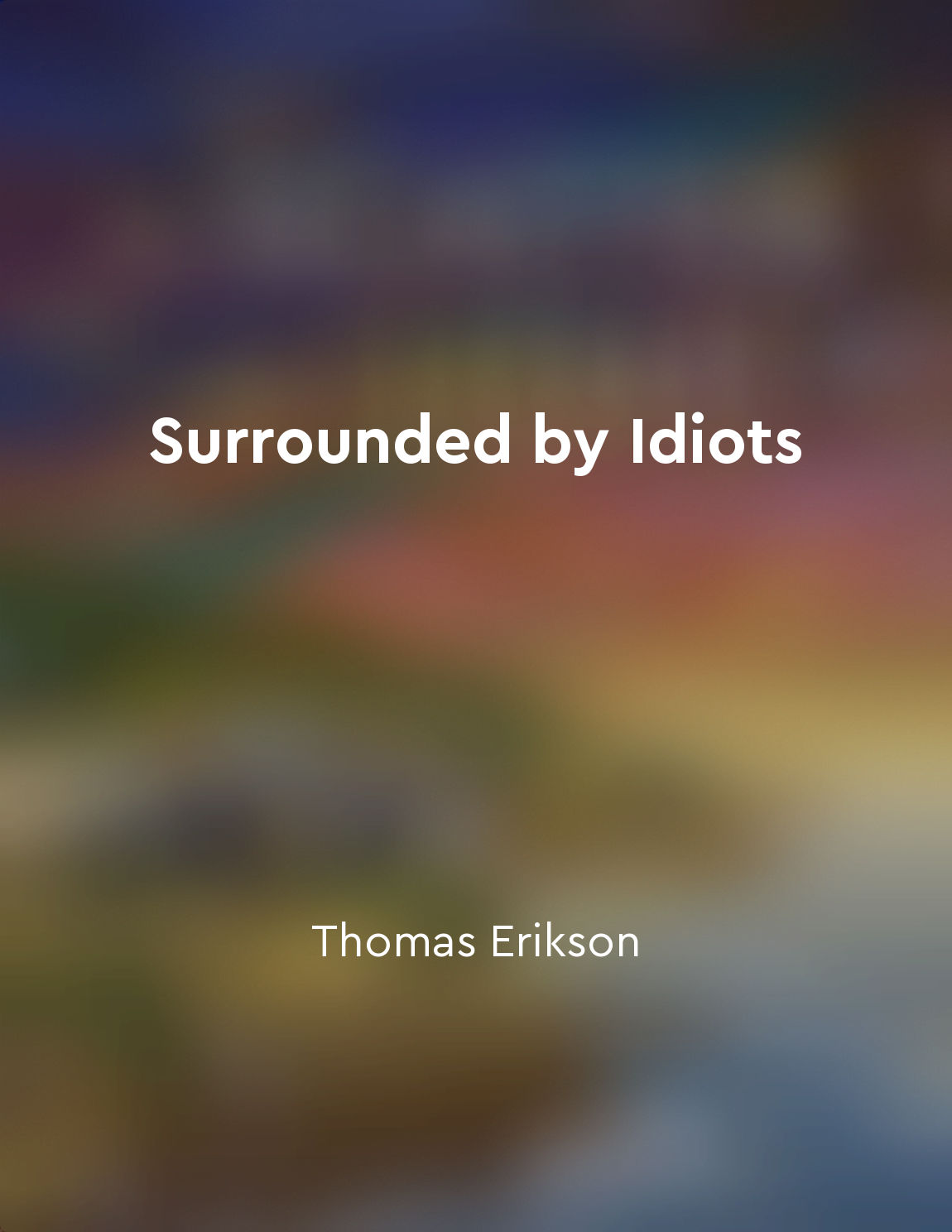Audio available in app
Understand the four different communication styles from "summary" of Surrounded by Idiots by Thomas Erikson
The four different communication styles are often the root cause of miscommunication and conflicts in our interactions with others. These styles, known as Red, Yellow, Green, and Blue, are based on the DISC model of human behavior. Each style has its own distinct characteristics, motivations, and preferred ways of communicating. Reds are assertive, direct, and results-oriented individuals who value efficiency and taking charge. They tend to be competitive and decisive, often coming across as strong-willed and in control. Reds appreciate straightforward communication and prefer to cut to the chase without beating around the bush. Yellows are social, outgoing, and enthusiastic individuals who thrive on relationships and interactions with others. They are optimistic, spontaneous, and creative, often bringing energy and excitement to the table. Yellows value connection and emotional expression in their communication, seeking harmony and positive vibes in their interactions. Greens are calm, patient, and detail-oriented individuals who prioritize stability and loyalty in their relationships. They are empathetic, analytical, and supportive, often taking time to listen and understand others. Greens prefer a more subtle and indirect communication style, focusing on consensus-building and avoiding conflict whenever possible. Blues are cautious, systematic, and reliable individuals who value accuracy and expertise in their interactions. They are logical, organized, and factual, often approaching communication with a methodical and structured mindset. Blues appreciate clear and precise information, preferring to stick to the facts and avoid unnecessary emotions or personal anecdotes. Understanding these four communication styles can help us navigate our interactions with others more effectively. By recognizing the differences between Reds, Yellows, Greens, and Blues, we can adjust our own communication style to better connect and collaborate with those around us. By being aware of these differences, we can minimize misunderstandings, build stronger relationships, and create more harmonious environments in both our personal and professional lives.Similar Posts
Use language that is easily understood
The key to effective communication lies in simplicity. When conveying a message, it is crucial to use language that is easily u...
Phrases for navigating public transportation
Navigating public transportation can be a daunting task, especially in a foreign country where the language may be unfamiliar. ...
Apologize sincerely when necessary to repair damaged relationships
When relationships are strained or damaged, a sincere apology can work wonders in repairing the connection. It's important to u...
Prioritizing selfcare promotes well-being and balance
In our fast-paced world, it can be easy to overlook the importance of taking care of ourselves. We often prioritize work, famil...
Setting boundaries is crucial in assertive communication
In assertive communication, setting boundaries plays a crucial role in establishing healthy relationships and maintaining self-...
A clear perspective can enhance motivation
When we have a clear perspective on our goals, obstacles, and strategies, we are better equipped to stay motivated and focused....
End with a strong conclusion
At the end of your speech, you want to leave your audience with a lasting impression. This is where your conclusion comes in. I...
Develop resilience in the face of rejection
The world of success is a tough one. It demands a lot from us, and one of the things it demands most is resilience. Resilience ...
Be mindful of your tone of voice
When engaging in conversation, it is crucial to pay attention to the tone of voice you use. The way you speak can have a signif...
Talk in terms of other's interests
When we are trying to persuade others to see our point of view, it is easy to fall into the trap of talking only about our own ...

